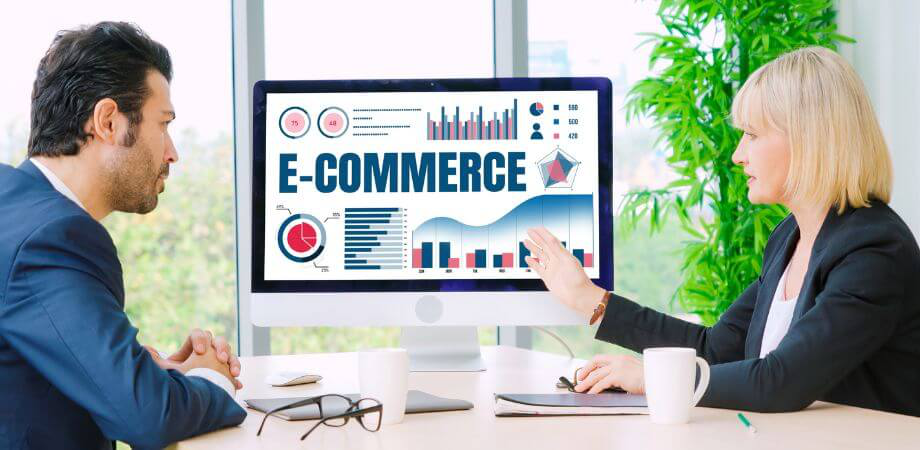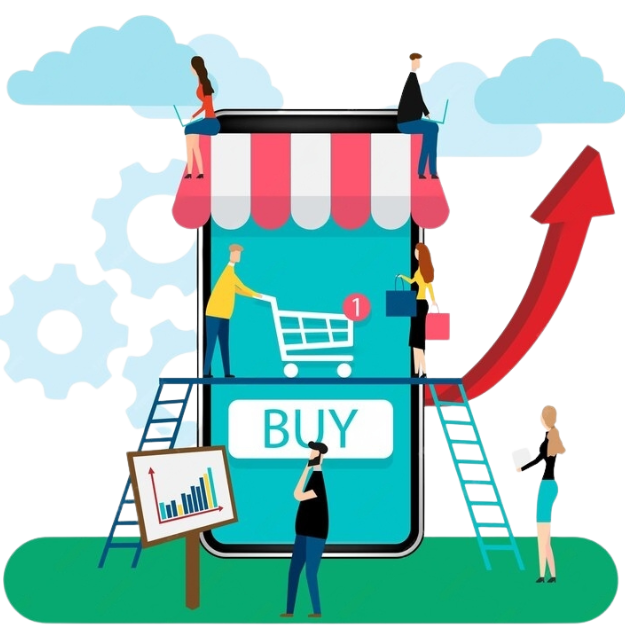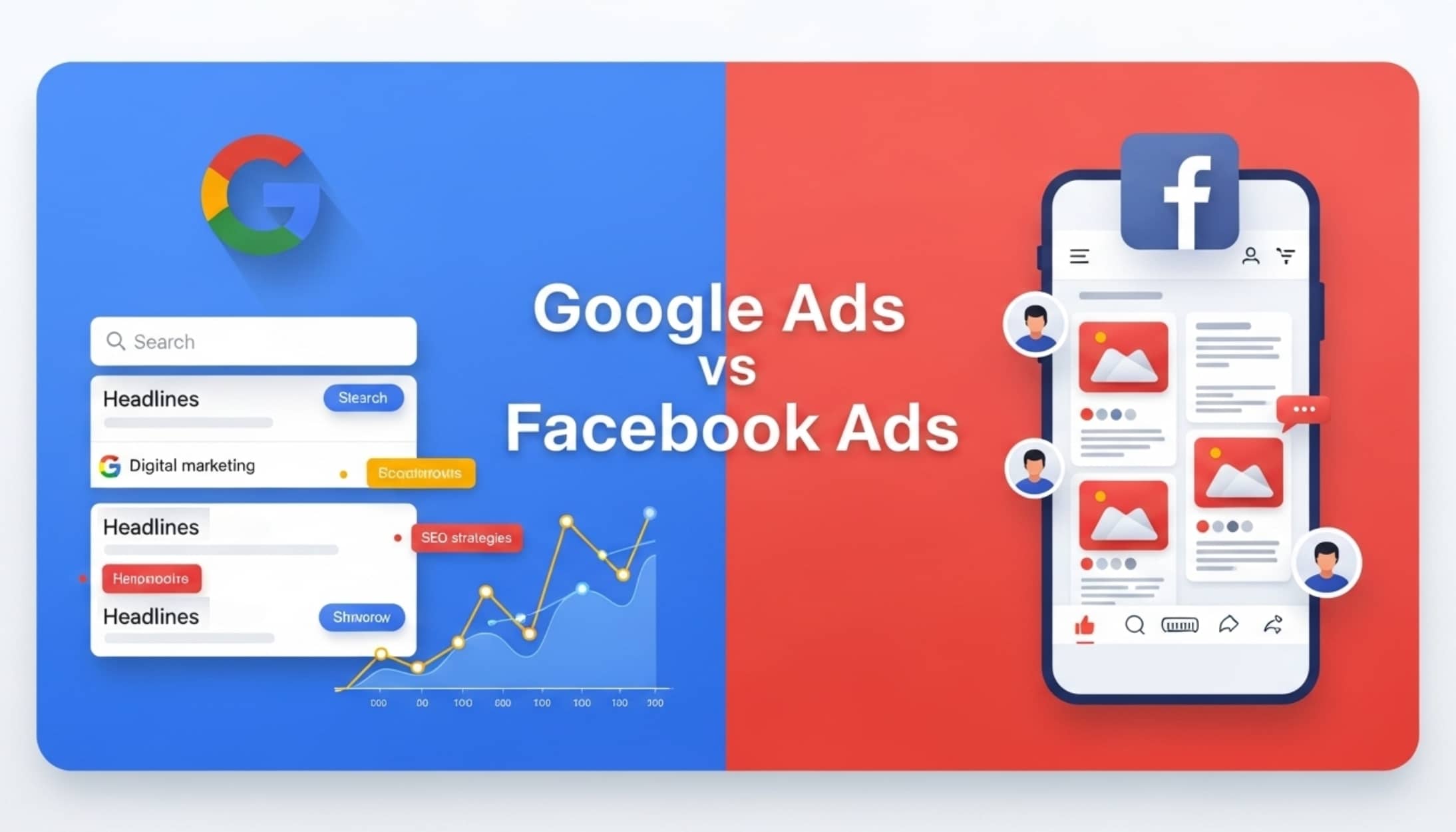How To Start An Ecommerce Business – Table of Contents
- Introduction
- How To Start An Ecommerce Business?
- What Is An Ecommerce Business?
- Why Start an Ecommerce Business?
- Things to Keep in Mind Before You Start an Ecommerce Business
- Steps To Start An Ecommerce Business?
- Tips to start an ecommerce business
- Some Facts Related TO Ecommerce Business
- Exploring Business Models
- Start your ecommerce business with Fathershops
- Conclusion
- FAQs
Introduction
The realm of commerce has witnessed a significant transformation in recent years, and ecommerce has taken center stage. The COVID-19 pandemic expedited the shift to online shopping, making it an ideal moment to initiate your own ecommerce venture. In this article, we present a comprehensive checklist for budding entrepreneurs who aspire to step into the world of online retail in 2025. We’ll explore what is an ecommerce business, why you should contemplate starting one, and provide a step-by-step guide to start an ecommerce business.
How To Start An Ecommerce Business?
- Brainstorm & Validate Your Idea
- Start with a Niche
- Product Selection and Sources
- Accumulate Details of Your Ideal Customers
- Analyze the Competition
- Develop Your Business Plan
- Register Your Ecommerce Business
- Build Your Online Store
- Commence Marketing Your Ecommerce Business
What Is An Ecommerce Business?
Before we delve into the checklist, it’s imperative to grasp the concept of an ecommerce business and understand why it’s an enticing endeavor. Ecommerce, an abbreviation for electronic commerce, involves the buying and selling of products or services online. Here are some compelling reasons to embark on your own ecommerce business:
Easy Setup: Establishing an online store is relatively straightforward, particularly with the myriad of ecommerce platforms available.
Lower Costs: Ecommerce eliminates the need for physical storefronts, which significantly reduces overhead expenses.
Endless Shelf Space: Unlike traditional retail, ecommerce provides virtually limitless space to showcase your products.
Wider Reach: Your ecommerce business can connect with a global audience, transcending geographical boundaries.
Data Access & Personalization: Ecommerce enables you to collect valuable customer data and tailor the shopping experience.
Selling While You Sleep: Through automation and online payment systems, your business can generate sales around the clock.
Meeting Customer Expectations: Ecommerce offers convenience and flexibility, aligning with the evolving expectations of modern consumers.
Why Start an Ecommerce Business?
Allow us to shed light on the importance of venturing into the world of eCommerce. While traditional brick-and-mortar stores operate with a sales team and time-bound operations, eCommerce businesses perform similar tasks with one key distinction – they are self-mechanized. By embracing an eCommerce platform to start an eCommerce business, you can automate numerous store activities, reducing the need for physical presence solely to manage after-sales services, such as packing, dispatching, and handling customer queries or grievances.
This shift to eCommerce offers unparalleled convenience and efficiency. Free yourself from the constraints of traditional store operations and seize the opportunity to expand your reach and maximize your business potential. Embrace the power of automation and elevate your business to new heights in the digital marketplace.
Things to Keep in Mind Before You Start an Ecommerce Business
Embarking on an eCommerce business is an exciting venture that can be made easier by assembling a team of professionals to bring your vision to life. However, before taking that leap, conducting thorough research becomes vital. Analyze and monitor your competitors’ strategies, marketing tactics, and sales approaches to gain valuable insights.
For those new to the business realm, additional research is essential, considering the wide range of products and services available online and the different eCommerce business models. If you’re starting fresh, the Dropshipping model presents a safer entry point. With Dropshipping, you can forego production and stock warehousing responsibilities, as these aspects are managed by the selected drop shipper.
Prepare for success by delving into market research, learning from competitors, and exploring the right eCommerce business model that aligns with your goals. With a solid foundation, you’ll be ready to seize the online marketplace and thrive in the ever-evolving eCommerce landscape.
Steps To Start An Ecommerce Business?
You’re now prepared to launch a new ecommerce company. But where do you even begin? Although it is quite easy to build an online store, always keep in mind that it does not promise the success of your online venture. Even the most optimistic estimates place the success percentage of startups at about 50% after four years, while actual success rates can vary. Nevertheless, there are ways that you may implement to increase your chances of success.
Now, let’s delve into the step-by-step guide for initiating your ecommerce business in 2025:
Step 1: Brainstorm and Validate Your Idea
Initiating your ecommerce journey begins with brainstorming product ideas. Think about what genuinely interests you and consider the potential market demand for those products. This isn’t just a one-time activity; you should continuously validate your concept by conducting market research and seeking feedback from potential customers. This helps ensure that your business idea aligns with what the market needs and wants.
Step 2: Start with a Niche
Starting with a niche means focusing on a specific category or target audience within the broad ecommerce landscape. Instead of trying to be everything to everyone, concentrate on a well-defined segment.
For example, you might choose to sell organic skincare products or specialize in fitness equipment for home workouts. This niche approach helps you stand out in a competitive market by catering to a specific group of customers with particular interests or needs.
Step 3: Product Selection and Sources
This step involves selecting the products you intend to sell and identifying best dropshipping supplier to obtain them. You have several options, including:
- Dropshipping: You partner with suppliers who handle product storage and shipping. Once the customer places an order the supplier ships the product directly to the customer.
- Manufacturing: You create your products from scratch. This may involve producing your unique brand of goods.
- Wholesaling: You purchase products in bulk from manufacturers or wholesalers and sell them in your online store.
Your choice depends on factors like your budget, the type of products you want to offer, and your overall business strategy.
Step 4: Accumulate Details of Your Ideal Customers
Developing detailed buyer personas is about creating a clear picture of your target audience. Understand their preferences, behaviors, demographics, and pain points. For example, if you’re selling fitness equipment, your buyer persona might be someone who values a healthy lifestyle, is tech-savvy, and seeks convenience in their workouts. This information helps tailor your marketing efforts and product offerings to meet your customers’ needs effectively.
Step 5: Analyze the Competition
Staying aware of your competitors is crucial. By studying your competitors, you can learn from their successful strategies and identify areas where you can differentiate your business. Analyze their products, pricing, marketing tactics, and customer engagement to refine your own approach.
Step 6: Develop Your Business Plan
Creating business plan is very significant. it serves as a roadmap and provides a clear vision to execute the desired strategies.
Your plan should include sections on market analysis, marketing strategies, financial forecasts, and a clear understanding of your business’s mission and vision.
Step 7: Register Your Ecommerce Business
Ensuring legal compliance is vital. It is necessary to your business registered as a legal entity. Additionally, obtain any necessary licenses and permits required for your specific location and industry.
Step 8: Build Your Online Store
Choose the best ecommerce platform that suits your needs, whether it’s Fathershops, WooCommerce, or others. Design your website to be visually appealing, user-friendly, and optimized for mobile devices. An intuitive and attractive online store can greatly enhance the customer experience.
Step 9: Commence Marketing Your Ecommerce Business
Implement a marketing strategy that includes various tactics like ecommerce SEO to improve your website’s visibility on search engines, social media marketing to engage with your audience, email marketing for reaching and retaining customers, and paid advertising to drive traffic and sales.
Your marketing efforts should be tailored to your target audience and aligned with your overall business objectives.
Tips to start an ecommerce business
Start Small: When you begin your ecommerce business, start with just a few products. If you make things, try using Instagram and a simple logo to see if people like your stuff. If you’re buying and selling products, set a time to get your items, make a website, and use small ads on Google or Facebook to start. Then, grow your business bit by bit.
Follow Trends: It’s good to know what’s popular when you start an ecommerce business. In 2023, being eco-friendly, fast delivery, knowing about cryptocurrency, and selling directly to customers are big trends. For example, it might be better to sell organic food or vegan meals than to start a clothing store.
Try Different Ways to Advertise: People need to learn about your business. You can test your ads on Google Ads without spending a lot of money. This way, you can find out what works best before you do a big ad campaign.
Use Partnerships and Sell on Different Sites: Even though selling directly to customers is popular, it also helps to put your products on big websites like Amazon and Etsy. Working with social media influencers and getting mentioned in magazines or online can also help people find out about your business.
These tips can help you start and grow your ecommerce business in a way that’s easy to manage and can lead to success.Some Facts Related TO Ecommerce Business:
- It is estimated that 95% of purchases will be made online by 2040.
- The eCommerce industry is growing 23% year-over-year.
- More than one-third of American small businesses do not have a website.
- eCommerce is expected to generate USD 5.42 trillion in sales per year.
- It’s estimated that there will be 2.14 billion global digital buyers in 2021.
- On an average, only 1.94% of ecommerce website visits convert into a purchase.
- Amazon is the biggest eCommerce platform followed by others like eBay, AliExpress, Etsy, etc.
- 93.5% of global internet users have purchased products online.
- Globally, 57% of online shoppers buy from overseas retailers.
- Less than 3% of eCommerce website visits convert into a purchase.
- In the US, 41% customers receive 1-2 packages from Amazon per week. The numbers increase when you factor in only young buyers below the age of 35.
- Globally, credit cards are the preferred method of payment, being used in 53% of transactions, followed by digital payment systems (43%), and debit cards (38%).
- Around 50% of people agree that they are likely to purchase something from a website’s chatbot
The top ten countries based on eCommerce market share are:
- China: USD 2779 billion
- USA: USD 843 billion
- United Kingdom: USD 169 billion
- Japan: USD 144 billion
- South Korea: USD 126 billion
- Germany: USD 102 billion
- France: USD 80 billion
- India: USD 68 billion
- Canada: USD 44 billion
- Spain: USD 38 billion
Ecommerce cannot even be imagined without mobile in today’s day and age. Some ecoommerce stats are given below:
- Mobile apps ensure 3x more conversions than mobile websites.
- 53% of mobile phone users prefer brand specific apps over aggregator platforms like Amazon.
- 82% of netizens in the US have used a mobile device to shop online.
- Mobile ecommerce accounts for 45% of US ecommerce sales.
- Mobile ecommerce sales in the US are projected to grow up to USD 488 billion in 2025.
- 93% of Millennials have compared online deals using a mobile device.
- 40% of all eCommerce sales during the holiday season comes from mobile phones.
- More sales are made on mobile during Black Friday and Cyber Monday.
- 65% of consumers compare price on mobile before buying from a physical store.
- One-third of consumer purchase decisions are influenced by product research on mobile devices.
- 62% of people are more likely to never return to a mobile store after a bad experience.
Exploring Business Models
Learning About Ecommerce Models: starting an ecommerce business, it’s crucial to understand the different ecommerce business models like dropshipping model, warehousing, or manufacturing. Each model offers unique benefits and challenges, tailored to different types of products and business approaches.
Assessing the Pros and Cons: In your journey to start an ecommerce business, evaluate each model’s advantages and limitations. This step is essential to choose a model that aligns with your resources, skills, and market opportunities.
Success Stories for Inspiration: Research case studies of successful ecommerce businesses. These stories provide valuable insights and inspiration, showing practical examples of how to start and grow an ecommerce business successfully.
Start your ecommerce business with Fathershops
Following are the easy steps to build ecommerce business at Fathershops ecommerce platform
Step 1-Visit Accounts.fathershops.com: Open your web browser and navigate to the website: accounts.fathershops.com.
Step 2-Fill in Your Personal Information: You’ll likely be prompted to create an account. Provide your personal information, including your name, email address, and a secure password.
Step 3-Choose Your Plan: Most ecommerce platforms offer various pricing plans, such as basic, premium, or enterprise. Choose the plan that best suits your business needs and budget.
Step 4-Register Your Domain and Store Name: Register a domain name for your ecommerce store. A domain name is your website’s address on the internet (e.g., www.yourstorename.com). You can typically check domain availability and purchase it through the ecommerce platform.
Step 5-Pick a Theme for Your Website: Choose a website theme or template that aligns with your brand and the products you’re selling. Most ecommerce platforms offer a range of themes to select from.
Step 6-Import Products from Fatherstock
You’ll need to access Fatherstock’s product data. This often involves the following steps:
a.Contact Fatherstock: Reach out to them to discuss product data access. They may provide product feeds, spreadsheets, or APIs.
b.Import Products: Use the provided data to import products into your ecommerce platform. The specific process varies depending on the platform you’re using, but it generally involves uploading product information, images, and pricing.
c.Organize and Customize: Arrange the imported products into categories and optimize product listings with descriptions, titles, and images.
d.Set Pricing and Inventory: Adjust pricing and ensure that inventory levels are synchronized with what Fatherstock offers.
And you are all set to start your business
Read More
- Step-by-Step Guide to Start Your Own eCommerce Business
- Explore Different eCommerce Business Models for Success
- Learn How to Build an SEO-Optimized eCommerce Website
- Understand the Dropshipping Business Model and Its Benefits
- Find the Best eCommerce Platforms for Your Business
- Follow this Complete SEO Checklist to Boost Your eCommerce Store
- Enhance Your SEO with Smart Social Media Marketing Strategies
- Master the Go-to-Market Strategy for Your eCommerce Success
- Discover Proven Ways to Increase Your eCommerce Sales
- Improve Your eCommerce Customer Service for Better Retention
Conclusion
Commencing an ecommerce business in 2025 offers exciting opportunities for entrepreneurs. With the right approach and meticulous planning, you can establish a successful online store that caters to the evolving needs of today’s consumers. Follow this comprehensive checklist to embark on your ecommerce journey and position your business for growth in the digital age.
FAQs
1.Can I run an ecommerce business from home?
Yes, you can run an ecommerce business from home. Many successful online businesses start as home-based ventures. With the right setup, internet connection, and dedication, you can effectively manage your ecommerce operations from the comfort of your home.
2.What are the 4 types of ecommerce?
The four primary types of ecommerce are:
Business-to-Consumer (B2C): In B2C ecommerce, businesses sell products or services directly to individual consumers. It’s the most common type, where you buy from online retailers like Amazon.
Business-to-Business (B2B): B2B ecommerce involves transactions between businesses. It’s about companies purchasing products or services from each other, such as a manufacturer selling materials to another company.
Consumer-to-Consumer (C2C): C2C ecommerce facilitates transactions between individuals. It’s often seen in online marketplaces where people sell products to each other, like on eBay.
Consumer-to-Business (C2B): C2B ecommerce is when individuals offer products or services to businesses. For instance, freelance professionals offering their services to companies.
3.Do we need a license for ecommerce?
The need for a license in ecommerce depends on various factors, including your location and the nature of your business. In many cases, you may need a business license or permits, especially if you’re operating as a legal entity. It’s crucial to check with your local authorities and legal counsel to ensure compliance with relevant regulations.
4.Is ecommerce profitable?
Ecommerce can be profitable, but success depends on various factors, including your business model, product selection, marketing strategies, and market demand. Many ecommerce businesses thrive and generate substantial profits. However, it’s important to plan, execute, and adapt your strategies to achieve profitability.
5.Can ecommerce sell their own products?
Yes, ecommerce businesses can sell their own products. This is known as “retail ecommerce.” You can either create and manufacture your products or source them from suppliers, and then sell them through your online store. This approach allows you to have control over the products you offer and the branding of your business.



 Integrated Supplier Network
Integrated Supplier Network



